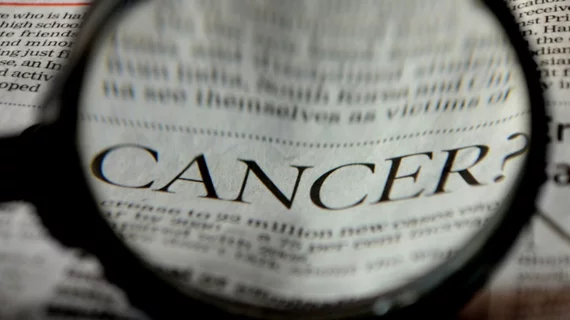Sound waves can separate cancer cells from blood with 86% efficiency
Researchers have developed a method to separate circulating tumor cells (CTCs) from blood samples, enabling “liquid biopsies” that can help diagnosis, prognosis and suggestions for treatment. The technique can separate CTCs from a 7.5-mL vial of blood with at least 86 percent efficiency in less than an hour.
Results of the study were published July 3 in Small.
"Biopsy is the gold standard technique for cancer diagnosis,” said Tony Jun Huang, PhD, of Duke University in Durham, North Carolina in a prepared statement. "But it is painful and invasive and is often not administered until late in the cancer's development. With our circulating tumor cell separation technology, we could potentially help find out, in a non-invasive manner, whether the patient has cancer, where the cancer is located, what stage it's in, and what drugs would work best. All from a small sample of blood drawn from the patient."
CTCs provide useful information about a tumor, but they tend to break away and are difficult to catch. Huang and colleagues set up a standing sound/pressure wave at an angle to a fluid flowing through a tiny channel. Pockets of pressure push particles in the liquid as they pass through. The acoustic force has more impact on larger cancer cells and separates CTCs and normal blood cells.
The method uses sound waves similar to those in ultrasonic imaging. Additionally, damage to the CTCs is decreased because they only experience the acoustic wave for only “a fraction of a second,” and it does not require labeling or surface modifications—thus maintaining the functions and native states of the CTCs.
"The biggest asset of this acoustic method of separation is that it's very gentle on the circulating tumor cells," said co-author Andrew Armstrong, MD, of the Duke University School of Medicine. "The cancer cells remain viable after passing through the chip and can be characterized, cultured or profiled, which allows us to do genotyping or phenotyping to better understand how to kill them. The idea is to develop personalized medicine approaches to individual patients based on their cancer biology, similar to what infectious disease doctors do with bacterial cultures and antibiotics."
At present, several technologies are designed to separate tumor cells from normal blood cells. But researchers noted, the methods can damage or kill cancer cells in the process, lack efficacy and may not work on all types of cancer.
Huang and colleagues’ next steps are to continue to develop the technology to increase speed and efficiency.

